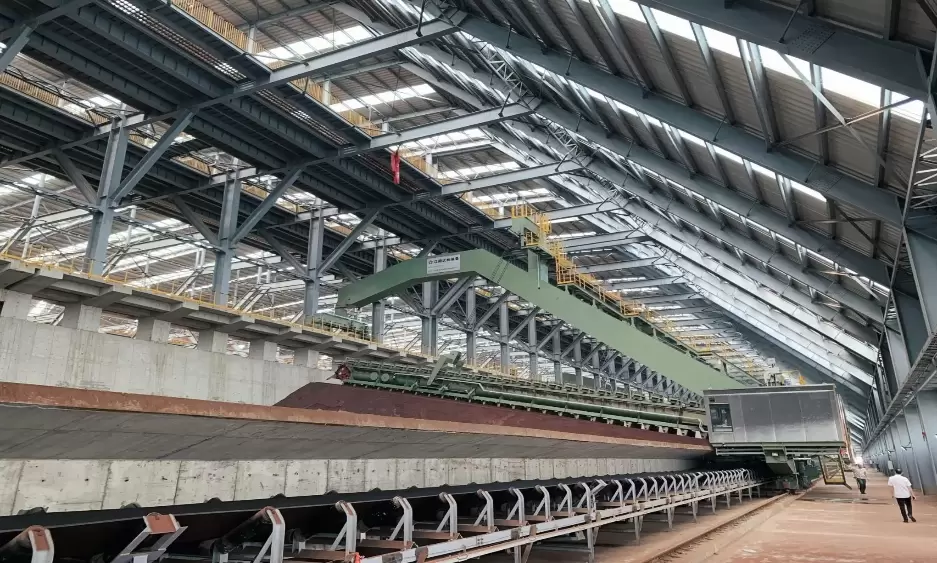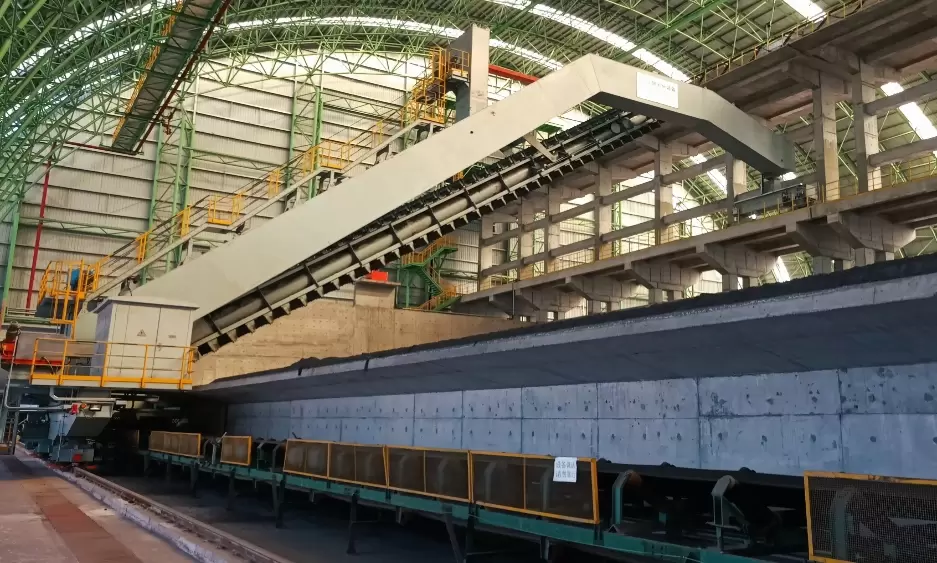In bulk material handling industries, efficiency, precision, and reliability are critical for operations ranging from mining to metallurgy. One of the essential pieces of equipment for stockyard management and material reclaiming is the semi-portal scraper reclaimer. By combining robust mechanical design with automated control systems, these machines optimize the handling of coal, ores, and other bulk materials.
Dadi, a private enterprise specializing in bulk material handling equipment and high-end metallurgical machinery, has established itself as a leading provider of semi-portal scraper reclaimers that cater to heavy-duty industrial needs.
What a Semi-Portal Scraper Reclaimer Is
A semi-portal scraper reclaimer is a specialized machine used to retrieve bulk materials from stockpiles efficiently and uniformly. Unlike full-portal reclaimers, semi-portal designs provide a stable support structure on one side, allowing the machine to maneuver over stockpiles while maintaining high structural strength and operational reliability.
The main components typically include:
Scraper bridge: A horizontal structure supporting the scraper mechanism.
Scraper winches and chains: Mechanisms that move the scraper across the stockpile.
Crawler or wheel base: Provides mobility along the stockyard.
Control system: Automates movement, speed, and material reclaiming patterns.
This configuration allows semi-portal scraper reclaimers to handle large volumes of bulk materials with minimal spillage or loss.
Key Features That Define Performance
The performance of a semi-portal scraper reclaimer depends on a combination of mechanical design and operational control. Some of the defining features include:
High Reclaiming Efficiency: Multiple scrapers or wide scraper bridges increase throughput and reduce idle time.
Structural Stability: Semi-portal support minimizes deflection under heavy loads and enhances safety.
Adjustable Scraper Mechanisms: Height and angle adjustments accommodate varying pile heights and materials.
Automated Control: Integrated control systems allow precise movement along the stockpile and optimized material collection.
Durability and Low Maintenance: Heavy-duty materials and wear-resistant components ensure long-term operation in harsh industrial environments.
These features collectively improve reliability, reduce operational costs, and ensure consistent material flow for downstream processing.

Industrial Applications of Semi-Portal Scraper Reclaimers
Semi-portal scraper reclaimers are widely used in industries where bulk material handling is a core operation. Key applications include:
Metallurgical Plants: Reclaiming iron ore, coal, or other metallurgical raw materials from stockpiles for smelting or processing.
Power Generation: Handling coal or biomass materials for thermal power plants.
Mining Operations: Efficiently retrieving mined ores from stockpiles before transportation or processing.
Cement and Aggregate Industries: Managing limestone, gypsum, and other bulk materials in storage yards.
In all these applications, semi-portal designs provide high throughput, uniform reclaiming, and reduced operational downtime, ensuring materials are consistently supplied to production lines.
Principle of Operation
The semi-portal scraper reclaimer operates based on a scraper bridge moving along the stockpile, combined with scraper chains or winches that pull the material toward a central conveyor or discharge point. The process involves:
Positioning the reclaimer along the stockpile: The crawler or wheel base ensures proper alignment.
Engaging the scraper mechanism: Chains or scrapers cut into the pile and convey material toward the center or a conveyor.
Automated adjustments: Sensors and control systems monitor pile height and material distribution, adjusting scraper speed and angle for optimal efficiency.
Continuous material flow: The reclaimed material is fed into conveyor systems for transport to downstream processing units.
This mechanism ensures consistent material recovery while minimizing manual labor and reducing material losses.


